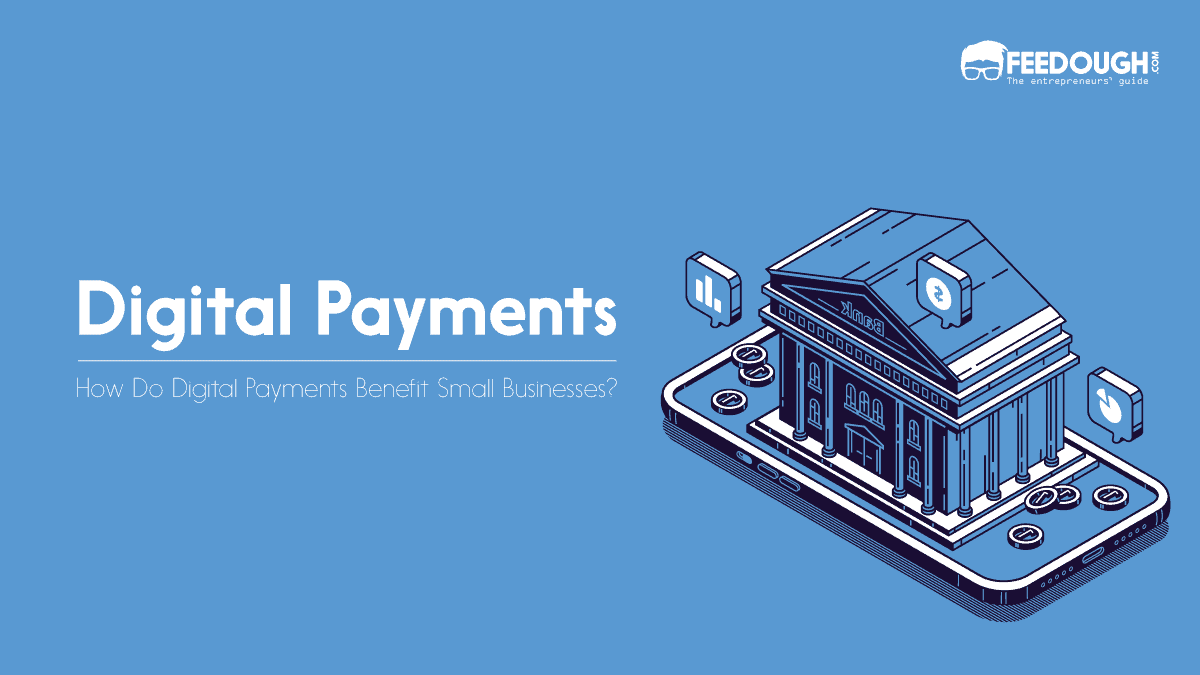Cash flow serves as a critical financial KPI for businesses of all stages, whether they’re experiencing rapid growth, remaining stagnant, or facing losses. Maintaining a healthy cash flow is essential for the efficient operation of any business.
Business owners’ worst nightmares often involve running out of cash, and with good reason. A staggering 82% of small businesses fail due to cash flow problems, emphasising the importance of understanding and effectively managing cash flow.
That’s why it’s essential to understand how cash flow works for businesses to run efficiently. For example, even growing businesses with a high-profit margin can be hit by cash flow problems. A common cause for such problems is the presence of an imbalance between payables and receivables, which can result in payables becoming due earlier.
This ultimately affects a business’s ability to cover various expenses, including taxes, bills, and payroll.
Increasing cash flow is an essential and beneficial objective for any business, empowering companies to grow and prosper. Having more money in the bank allows you to grow your company by hiring more staff, increasing operations, investing in new goods and services, and so on.
Speed Up Receipts
Businesses often face payment delays from clients, which hampers their cash flow. One of the best ways to increase your cash flow is by encouraging customers to pay their invoices on time.
How does speeding up receipts help to improve cash flow?
Speeding up your receipts reduces the time gap between your outflows (expenses) and inflows (income). This facilitates smoother cash flow management. If your business operates on a tight budget, faster payment collection will ensure that funds are readily available for business operations or any unexpected expenses.
One efficient way to achieve this is through modern, swift payment methods. For instance, introducing an online payment system and offering a small discount for early payments can result in money coming in more quickly and improving cash flow.
According to a study by Aberdeen Group, organisations that use automated invoice processing experience a 25% reduction in the time it takes to process an invoice, which can increase cash flow.
Dos & Don’ts of Speeding Up Receipts
- Do offer multiple payment options: The more payment options you offer, the easier it is for clients to pay. Speedy payment options can include online payments, credit cards, digital wallets, and direct deposits.
- Do Offer Incentives for Prompt Payments: Create incentives like discounts or rewards for customers who pay early. This can speed up the payment process.
- Do Implement a Dunning Process: A well-established dunning process (systematic method for dealing with past due payments), can reduce payment defaults and speed up receipt collection, enhancing cash flow.
- Don’t Forget to Follow Up: If a customer invoice is overdue, don’t hesitate to follow up. Regular, polite, and persistent follow-ups can ensure that you receive your payment.
- Don’t Make Payment Process Complicated: A complex, time-consuming payment process can discourage prompt payments. Keep payment procedures simple and user-friendly.
- Don’t Ignore Small Balances: Even small invoice amounts add up. Ensure that all outstanding balances, big or small, are pursued for payment.
Consider Leasing Instead of Buying
Leasing refers to the process where a business arranges to use assets, like vehicles or equipment, by paying in instalments rather than purchasing them outright. These timely payments can be cost-effective and manageable, which helps maintain steadier cash flow.
How does leasing help to improve cash flow?
Businesses can frequently avoid the high upfront costs by renting instead of buying new equipment and other capital expenses. Instead of purchasing assets upfront using working capital or taking on debt with variable rates, leasing allows businesses to access technology and equipment without sacrificing their working capital.
Businesses need to make regular payments over a set lease term, which helps maintain the liquidity and is crucial for improving cash flow. Also, leasing can offer business tax benefits, as such payments are tax-deductible expenses. This benefit further aids in cash flow management.
Dos & Don’ts of leasing to improve cash flow
- Do compare options: Always compare leasing agreements from different vendors to ensure you’re getting the best deal in terms of cost, terms of agreement, and after-sale support.
- Do understand the terms: Always read and understand the fine print before entering into a leasing agreement.
- Do Analyse the Maintenance Costs: When comparing the advantages of leasing to purchasing, don’t forget to account for the costs associated with repairs and upkeep of the company’s equipment.
- Don’t Forget About Lease Termination Clauses: Always pay attention to the penalties for terminating a lease early. Unforeseen circumstances may require you to end a lease, which could severely impact your cash flow.
- Don’t Ignore the Total Cost: Don’t just look at the monthly payments but also consider the total cost over the lease term. Sometimes, the total lease cost could exceed the cost of purchasing the asset outright.
- Don’t Miss Due Diligence: Always perform due diligence about the leasing company to ensure that they provide reliable service. A less-reputable company could cause unforeseen costs, negatively affecting your cash flow.
Reduce Expenses
One of the easier ways to improve your cash flow is by lowering your spending. The concept is simple at its core: less money going out means more money staying in.
Naturally, it’s not as simple as it sounds. Effectively reducing expenses without hampering your business’s essential operations or service quality requires a careful, strategic approach.
How does reducing expenses help to improve cash flow?
By reducing your costs, you can open up opportunities for more liquid assets that can be allocated towards growth, investments, or simple financial stability. This could be achieved by locating suppliers at a lower cost, reducing energy use, or simplifying processes to eliminate inefficiencies.
Every dollar you can save by cutting unnecessary costs or finding efficiencies within necessary costs contributes directly to your cash flow. You maintain a larger revenue share by reducing your outflows, supporting healthier cash flow.
Dos & Don’ts of reducing expenses
- Do Conduct Regular Expense Audits: Regularly examine your expenses to identify nonessential costs that can be trimmed without affecting your operations or service quality.
- Do Use Technology: Utilise technology to automate your processes and improve efficiency, thus reducing the need for manual labour and potentially decreasing costs.
- Do Practice Lean Inventory Management: Keep minimal stock to reduce storage costs and to avoid tying up cash in unsold stock.
- Don’t Eliminate Quality Control: While cutting costs is beneficial, making reductions that can impact the quality of your product or service can negatively affect your business reputation and sales.
- Don’t Neglect Maintenance: While it may be tempting to cut back on maintenance costs, this can lead to bigger, more costly problems in the future.
- Don’t Be Inconsistent with Cost Reduction: Implementing cost reduction measures should be a consistent habit rather than a rushed reaction to a cash crunch.
Improve Inventory Management
Inventory refers to the goods or materials your company currently has on hand. Managing this effectively helps to ensure you don’t spend unnecessarily on excess stock and that you’re not caught short by unexpected demand.
How can improving inventory management help to improve cash flow?
Good inventory management is crucial in maintaining a healthy cash flow. It helps in the following ways:
- Reduced Storage Costs: Excess inventory takes up storage space, which can incur costs such as rent and utilities. By managing your inventory more efficiently, you can reduce the stock on hand and save on storage expenses.
- Avoid Overstocking: Overstocking can result in excess or obsolete goods that cannot be sold, tying up cash in unsold stock and potentially leading to losses.
- Improve Cash Conversion Cycle: The cash conversion cycle is the time it takes a company to convert its inventory into cash. By managing inventory effectively, you can reduce this cycle and improve cash flow by quickly converting inventory into sales and then into cash.
Dos & Don’ts of improving inventory management
- Do Use Sales Reports: Make use of past sales reports to predict future demands. This will enable you to order the optimal amount of stock.
- Do Perform Regular Audits: Regular physical checks of your inventory ensure accuracy, helping to detect any losses, theft or discrepancies at the earliest.
- Do Negotiate Better Terms with Vendors: Establish good relationships with vendors to negotiate better credit terms, effecting a positive cash flow.
- Don’t Overstock: Excessive inventory can account for significant wasteful spending. Don’t order more than you need, as it ties up cash, takes up space, and risks becoming obsolete.
- Don’t Neglect Seasonality: Ignoring seasonal trends might result in a stock surplus or shortfall. This can lead to loss of sales or increase in holding costs.
- Don’t Rely Solely on Manual Tracking: It’s inefficient and prone to error. Use an inventory management software system to track inventory efficiently and accurately.
Increase Prices
Pricing is one of the most important factors affecting a business’s cash flow and profitability. It fills in the gaps between your company’s expenses, the demand in the market, and the estimated worth of your goods or services. You can improve cash flow by improving revenue through slow price increases.
How does increasing prices help to improve cash flow?
By raising prices, the amount of money brought in per sale increases. This means that you need to make fewer sales to reach your desired level of cash flow. Additionally, increasing prices can also help offset any increase in expenses or costs related to running the business.
Moreover, price increases can have a psychological effect on customers. It can create a perception of increased value and quality, leading to higher demand and potentially loyal customers. However, it is important to carefully consider the impact on customers and the market before implementing price increases.
Dos & Don’ts of raising prices
- Do Test Prices: Test various pricing strategies or conduct market research to gauge customer acceptance levels before implementing a price increase.
- Do Implement Gradual Increases: Consider a gradual price increase over time to minimise the shock and potential customer dissatisfaction.
- Do Communicate Openly: Be transparent and clear with your customers, sharing the reasons behind the price increase and reinforcing the benefits of your product or service.
- Don’t Increase Prices Suddenly: Avoid implementing a substantial price increase without warning. It may lead to negative reactions and customer dissatisfaction.
- Don’t Sacrifice Quality: Do not lower quality or cut corners as a way to justify maintaining high prices. This could lead to losing customers and damaging reputation.
- Don’t Stay Rigid: Be willing to revise your pricing strategy if circumstances change or if the current approach is not working as expected.
Invoice Factoring
Some businesses struggle with cash flow due to long invoice payment cycles. This is where invoice factoring solutions can help.
Invoice factoring involves selling your accounts receivables to a third party (a factoring company) at a discount. Instead of waiting for slow-paying customers, the business receives most of the money upfront (usually between 70-90% of the invoice value).
The factor is then responsible for collecting the full amount from the customer. Once the customer pays the full amount of the invoice, the factor pays the remaining balance to your business minus the agreed-upon factoring fees.
How does invoice factoring help to improve cash flow?
Invoice factoring helps improve cash flow by providing businesses with immediate access to a significant portion of their outstanding invoices. This can help cover day-to-day expenses, pay employees and suppliers, and invest in growth opportunities without having to wait for customers to pay.
Additionally, invoice factoring eliminates the risk of non-payment from slow-paying customers, as the factor is responsible for collecting the full amount. This can help businesses avoid cash flow issues and maintain a steady income stream.
Dos & Don’ts of Invoice Factoring
- Do Choose the Right Factor: Assess potential factoring companies carefully. Look for a firm that understands your industry, communicates openly, and has a good reputation.
- Do Review Your Client’s Creditworthiness: Factoring companies typically consider your clients’ creditworthiness rather than your company’s when assessing factoring arrangements. Ensure your clients have a good credit record for smoother transactions.
- Do Consider Invoice Insurance: For an additional layer of protection, consider insuring your invoices. This mitigates the risk if a customer fails to pay an invoice.
- Don’t Ignore the Costs: Factoring involves costs such as setup fees, service fees for running the ledger, and financing fees for the advance. Ensure these costs justify the benefits brought by the improved cash flow.
- Don’t Factor All Invoices: You don’t need to factor in all your invoices, especially if you only have a few clients with late payments. Be selective and only factor in invoices that positively impact your cash flow.
- Don’t Rely Only on Factoring: While factoring can improve the availability of cash, don’t rely solely on it. It’s one component of a larger cash flow management strategy.
Send Invoices Out Immediately
Sending invoices immediately, whether the work is complete or as soon as a product is delivered, can significantly impact your cash flow. This practice ensures that the timeframe between providing your service or products and getting paid is as short as possible, optimising your turnover.
When you wait to invoice your clients, you’re essentially providing them with an interest-free loan. The longer you wait to send that invoice, the longer it will take to get your money, and you’ll have to bear the brunt of a cash flow gap.
How does sending out invoices on time help to improve cash flow?
Sending out invoices immediately helps to improve cash flow by shortening the time frame between providing a service or product and receiving payment. This reduces the length of the cash flow gap and ensures that businesses have access to their funds as soon as possible. It also prevents businesses from providing interest-free loans to their clients, impacting their financial stability. Additionally, sending out invoices immediately can improve the turnover rate of a business, as it allows for a steady flow of incoming cash rather than sporadic payments. This ultimately leads to improved cash flow and financial stability for businesses.
Dos & Don’ts of sending invoices immediately
- Do include a clear payment deadline: Clearly stating when payments are due helps streamline cash flow management and keeps clients informed. Put the deadline preferably in bold, like at the top of the invoice or at the bottom of the payment slip.
- Do follow up on unpaid invoices promptly: Regularly revisit outstanding invoices and send payment reminders to clients. Keep the communication lines open to address any concerns or issues.
- Do maintain good records of all invoices: Proper documentation helps avoid disputes and keeps accounts receivable accurate.
- Don’t delay sending invoices: Postponing invoices only opens the possibility of payment delays or items being forgotten, which negatively impacts your cash flow.
- Don’t ignore inaccuracies and discrepancies: Double-check the invoice details to ensure accurate billing and avoid disputes that can delay payments.
- Don’t forget to mention payment terms and conditions: Clearly communicate your expectations with regard to payment terms and late fees, if applicable. Make sure to include this information if you apply late payment fees.
Cut Unnecessary Spending
You should clearly understand your company’s financial spending from your cash flow analysis. Anywhere you can reduce ongoing costs will help you manage your cash flow better.
The first step in controlling costs is by identifying their sources. Working through your company’s financial spending will highlight your spending habits, highlighting essential and nonessential expenditures.
How does cutting unnecessary spending help to improve cash flow?
By investing time in managing business expenses and eliminating unnecessary spending, you can effectively stop cash leaks before they start to improve cash flow.
Additionally, you can consider your expenses year-round and cut back on some expensive expenses during periods when they are not necessary to maintain the business’s operations.
Dos & Don’ts of Cutting Unnecessary Spending
- Do create a budget: A budget helps you identify essential living expenses and sets a limitation on discretionary spending, thus guiding your financial decisions.
- Do utilise money management apps: These apps monitor your spending, provide insights about your habits, and suggest ways to cut costs.
- Do prioritise paying off debt: Interest payments can eat into your cash flow. Reducing debt helps to improve your cash flow and financial health.
- Don’t ignore small expenses: Small, frequent purchases can add up over time and significantly impact your cash flow.
- Don’t buy on impulse: Impulse buying can disrupt your budget and lead to unnecessary expenditures.
- Don’t forget to save and invest: Savings and investments are your best bet for future financial emergencies and growth.
Offer Customers Incentives For Fast Payments
Managing payments, particularly slow ones, is an important yet challenging aspect of running a successful business. Giving incentives to customers for swift payments can be an effective tool in addressing this issue and helping to improve cash flow.
How does offering customers incentives for fast payments help to improve cash flow?
The primary benefit of incentivising quick payments is that it speeds up the revenue collection process. You can incentivise customers who pay their invoices within a week or even immediately upon receipt. This gives you faster access to that revenue, which improves cash flow.
Additional rewards for making early payments could be merchandise, gift cards, or discounts on subsequent purchases. Although the discount need not be significant, clients will value the incentives given to them for prompt payments and encourage them to stay.
To encourage the client to respond to the offer right away, mention these incentives in the invoice.
Dos & Don’ts of Offering Customer Incentives
- Do Set Clear Terms and Conditions: Ensure your customers understand the terms and conditions of early payment discounts. Clearly stipulate the reward for early payment and the consequences of late payment.
- Do Regularly Review the Discount Rate: Review your discount rate regularly to ensure that it is actually providing value to your business. It should be neither too high (affecting your profits) nor too low (not attractive to customers).
- Do Follow-Up: If a customer falls into arrears, follow up promptly. The sooner you communicate, the more likely you are to improve your cash flow.
- Don’t Overlook Your Profit Margins: While incentives can be a good idea, don’t offer discounts so large that they eat into your profit margins.
- Don’t Hesitate to Enforce Late Payment Penalties: If a customer doesn’t pay in time, do not hesitate to apply the pre-agreed late payment penalties.
- Don’t Be Inconsistent: Don’t apply an incentives policy inconsistently once you have an incentives policy. Set clear rules for when the incentives apply and stick to them.
Use Cash Flow Management Software
When struggling with cash flow, the problem often lies in not just the cash management but, more importantly, the prediction of cash flow. This is where cash flow management software plays a critical role.
This tool can provide valuable insights, help identify patterns, manage invoicing, and automate processes to improve your cash flow substantially.
How does using cash flow management software help improve cash flow?
You can predict peak cash flow periods and get ready for falls by using cash flow management software to track your cash flow more accurately.
One of the most valuable assets cash flow management software provides is automation. Manually keeping track of cash flow can be laborious and prone to human error. The software can automatically pull data from all business transactions and categorise them appropriately. This helps in accurately monitoring inflows and outflows and helps to improve cash flow.
Dos & Don’ts of using cash flow management software
- Do Thorough Research: Identify and compare different cash flow management software options to find the one that best suits your business needs. Consider factors like features, ease of use, scalability, and cost.
- Do Ensure Integration and Compatibility: Make sure the software integrates seamlessly with other financial tools and software you’re using, such as accounting, payroll, or ERP systems.
- Do Analyse Reports Periodically: Take advantage of the reporting features in the software, periodically reviewing cash flow trends, anomalies, and areas for improvement.
- Don’t Neglect Security: Make sure the software system adheres to strict security and data privacy protocols. Keep sensitive data secure, and don’t neglect regular software updates.
- Don’t Rely Solely on Automation: While automation can save time and reduce errors, don’t rely only on the software. Regular human review and monitoring of the data and reports are still necessary.
- Don’t Ignore Software Limitations: No cash flow management software is perfect. Be aware of the software’s limitations and supplement it with other relevant tools and information as needed.
Bottom Line
By increasing cash flow, you can strengthen your company and lay a strong foundation for future growth. While challenges are bound to arise, a calculated approach towards cash flow management can secure your business’s financial health, propelling it towards a prosperous future.
These ten ways will help you maintain a healthy cash flow, whether you’re just starting out or have been in business for years, ensuring the long-term success of your company.
Additionally, you should confirm that your choices about product or service development, marketing, customer service, and acquiring new clients are right.
FAQs
Cash flow refers to the amount of cash or cash-equivalent being transferred in and out of a business. A positive cash flow indicates higher liquid revenue, while a negative value implies that the business’s expenses are more than their income during a specific period.
Improving cash flow is important because cash is the lifeblood of a business. A healthy cash flow allows a business to cover its costs and expenses, invest in its growth, and provide a safety net against potential financial downturns.
Technological tools like cash flow management software can help you keep track of your cash flow and forecast future trends. Online payment solutions can help accelerate the collection of payments, and digital invoicing can streamline the invoicing process and speed up receivables.
A business loan can provide a quick infusion of cash, but it should be considered carefully. Interest payments and potential difficulties in securing the loan can be drawbacks. Exploring all options and ensuring you have a solid plan to repay the loan without creating further cash flow problems is important.
Wordsmith. Caffeine enthusiast. A full-time business-oriented writer with a knack for turning the ordinary into extraordinary. When not working, you can find Ishan listening to music, reading or playing with doggos.







![AI Financial Projection Generator [Unlimited & No Login] Financial Projection Generator](https://www.feedough.com/wp-content/uploads/2024/10/AI-Financial-Projection-Generator-150x150.webp)

